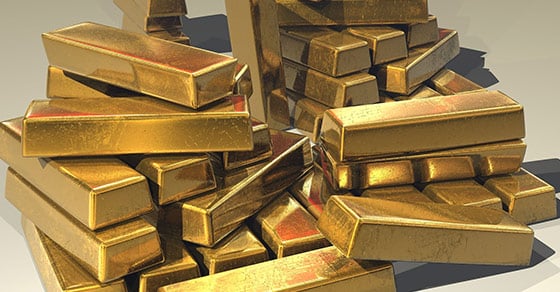Cyanidation, or the metallurgical process of extracting gold from ore with cyanide leaching agents, has long been a primary method of gold beneficiation. Widely used throughout the world, one incredible material helps to make gold recovery from a cyanide solution possible; with its ultra-porous structure, activated carbon is a powerful adsorbent used throughout a number of industries to separate material components through adsorption.
In the gold industry, the use of activated carbon to separate gold from cyanide leaching solutions has become an industry standard for efficient gold recovery in Carbon-in-Leach (CIL), Carbon-in-Pulp (CIP) and Carbon-in-Column (CIC) operations.
How Activated Carbon Works
Activated carbon, a material produced from carbon-rich sources, offers an incredibly porous surface structure, which creates a vast surface area (about an acre per ¼ teaspoon) on which to adsorb materials. This porous structure, in combination with attraction forces, allows activated carbon to capture material components and hold on to them for later recovery.
This diverse material is used throughout a number of industries to pull contaminants from liquids or gases, such as in the purification of water, the scrubbing of pollutants from gases at industrial processing facilities, and even in the food and beverage industry to ensure product quality is maintained.
In the gold beneficiation process, activated carbon is a vital tool, used to separate gold that has been dissolved in a cyanide solution, so that it can be recovered.
The Gold Cyanidation Process
The gold cyanidation process is a series of steps that vary depending on the characteristics of the deposit and the type of mine. Although not always the case, this process typically begins with mined gold ore being crushed and ground in order to make the gold more accessible.
Crushed ore may then be agglomerated in an agglomeration drum (aka ore drum or agglomerator) prior to leaching. Agglomeration creates more uniformly shaped and sized particles so that the leaching agent can more effectively percolate through the ore particles, as is demonstrated in the figure below.

Through reaction with the ore, the cyanide leaching solution, typically sodium or potassium cyanide, forms an aqueous solution of a cyanide-gold complex.¹
The activated carbon is then mixed with the pregnant leaching solution. Here, the gold is adsorbed onto the surface of the activated carbon, now considered loaded.
The gold can then be desorbed from the loaded carbon in a process known as elution (this step is often referred to as stripping), which produces a high gold concentrate solution from which gold can be electrowon.
Characteristics of Activated Carbon for Gold Recovery
Various types of activated carbon exist, even within the field of gold recovery. Different types may be chosen for different applications, with several material characteristics working together to affect how the material performs in a given scenario.
In choosing an activated carbon for use in gold recovery, the characteristics below are of key importance. These characteristics vary as a result of both the physical and chemical properties of the material, which differ depending upon the source material and processing methods used to produce the activated carbon.³
Adsorptive Capacity (known as K-value)
Often called loading capacity, the adsorptive capacity of activated carbon refers to how much the activated carbon can adsorb. Adsorptive capacity is linked to the physical and chemical properties of the activated carbon.³
Adsorption Rate (known as R-value)
The rate of adsorption is also largely affected by both physical and chemical properties of the activated carbon.³
Mechanical Strength and Wear Resistance/Hardness
Mechanical strength is important in reducing losses because of attrition. Attrition is the breakdown of material into fines. Not only does this result in carbon loss, but it also causes a loss in recoverable gold.³
Particle Size Distribution
Particle size distribution is another key factor in choosing an activated carbon for gold recovery, as it is largely linked to adsorption rate.³
Often, the unique requirements of the specific application at hand will require a balance of these characteristics to achieve the best results. Coconut shell-based carbons are the most commonly selected type of activated carbon for gold recovery. This type of carbon boasts numerous characteristics that make it ideal for use in gold recovery, including superior hardness and pore structure.
Reactivating Activated Carbon
One of the many benefits to using activated carbon is that it is reusable. Instead of purchasing new activated carbon, the saturated carbon can be reactivated and used again.
How Reactivation Works
During elution, an acid wash step helps to partially reactivate the spent carbon by removing some inorganic components. While this does reactivate the carbon to an extent, organic components unaffected by acid must still be removed.² This is commonly carried out through the use of a rotary kiln – a rotating vessel which utilizes high temperatures to remove undesirable components through a series of chemical reactions and phase changes.
Upon reactivation, activated carbon is again ready to act as an adsorbent, and can be recycled back into the process anew.
Conclusion
The gold cyanidation process is a primary method of gold beneficiation. Activated carbon is a critical component in the beneficiation of gold ore, allowing this widespread process to occur because of its ability to recover gold from the gold-cyanide complex.
Depending on the deposit, some silver ores may also be processed via cyanidation. Here too, activated carbon is the catalyst for recovery of this precious metal.
FEECO has been an expert in thermal processing since 1951. We can provide heavy-duty, reliable custom rotary kilns for activated carbon regeneration. For more information on our custom rotary kilns, contact us today!
Sources
- United States. Environmental Protection Agency. Office of Solid Waste, Special Waste Branch. Technical Resource Document: Extraction and Beneficiation of Ores and Minerals – Gold. Vol. 2. 1994. Web. 19 Sept. 2016.
- Elution & Carbon Reactivation Resource Book. PDF. https://rsteyn.files.wordpress.com/2010/07/elution-and-carbon-reactivation-basics.pdf
- Marsden, John, and Iain House. The Chemistry of Gold Extraction. 2nd ed. Littleton: Society for Mining, Metallurgy, and Exploration, 2006. Google Books. Web. 19 Sept. 2016.

